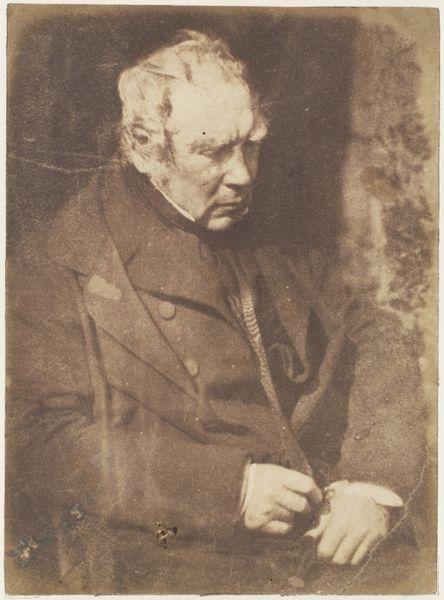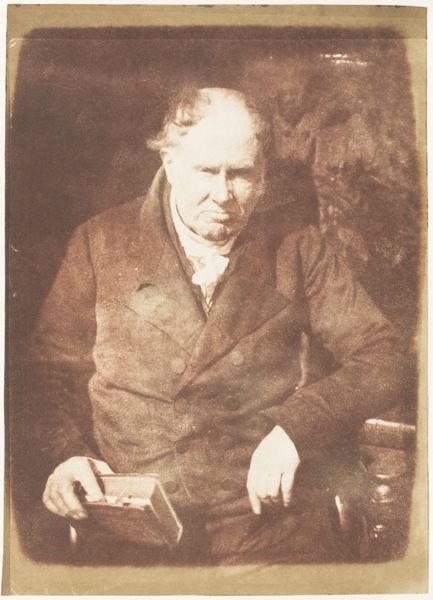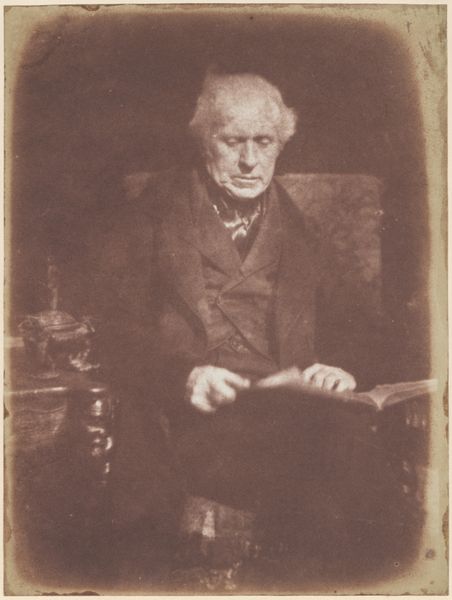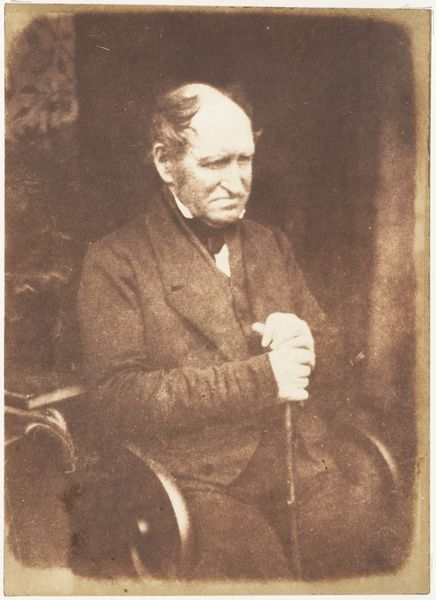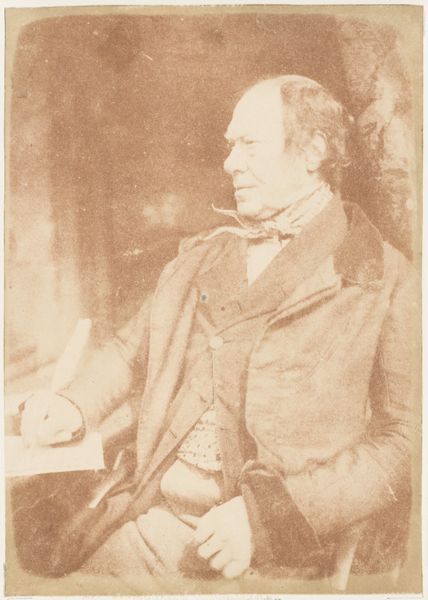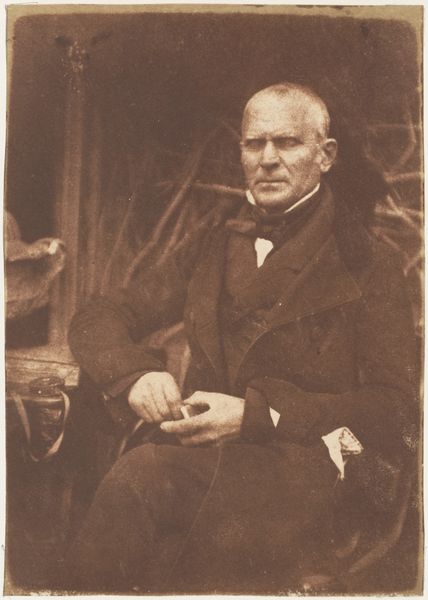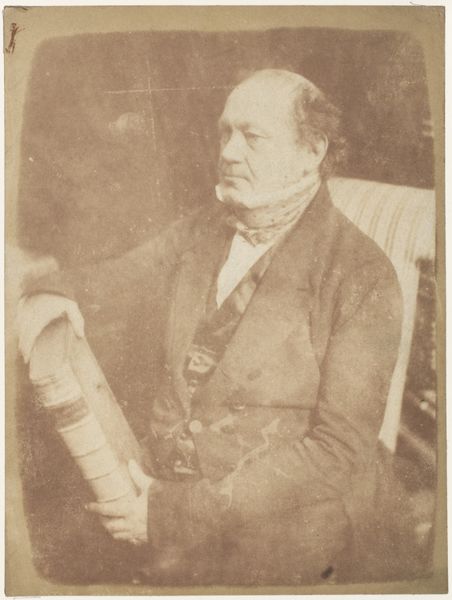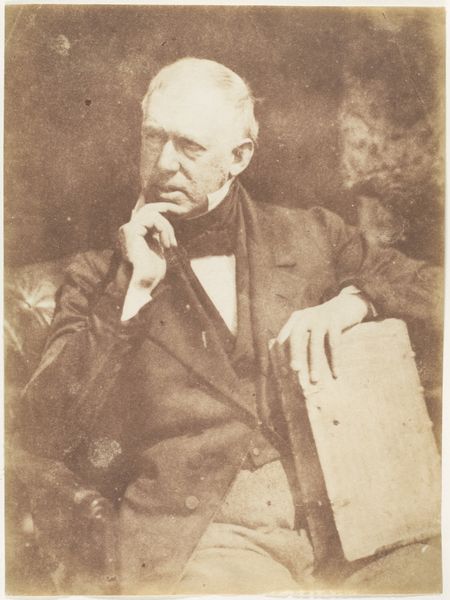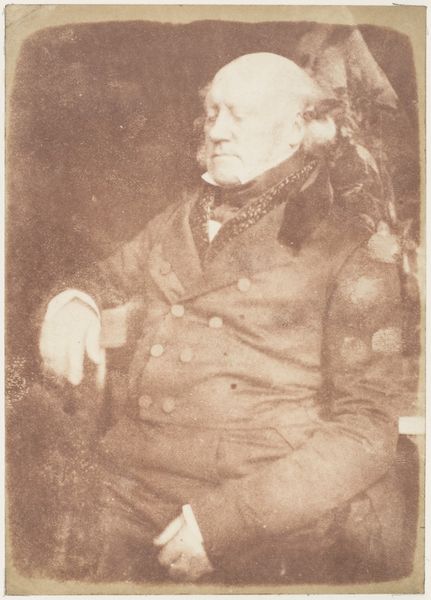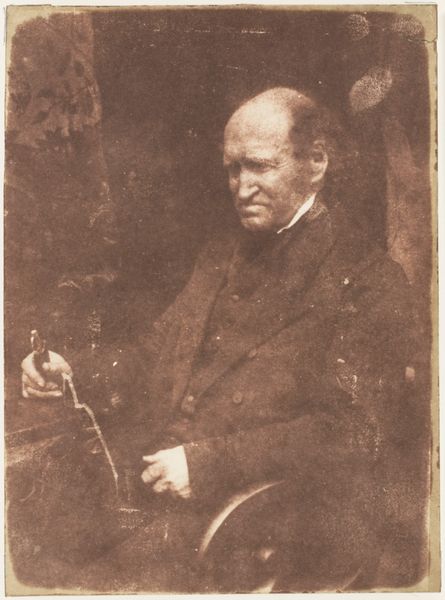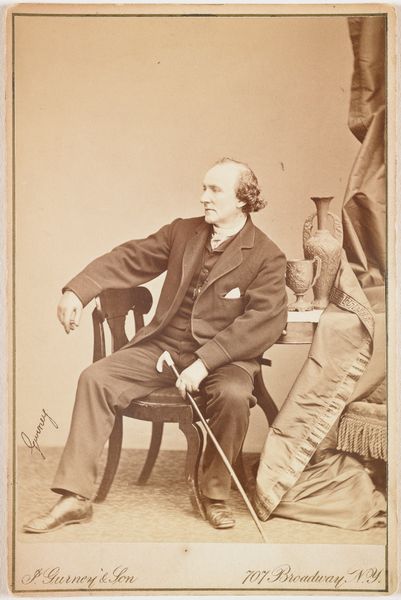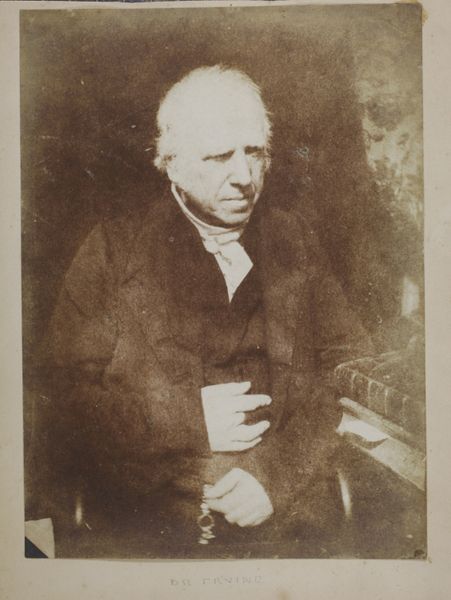
daguerreotype, photography
#
portrait
#
daguerreotype
#
photography
#
historical photography
#
romanticism
#
realism
Copyright: Public Domain
This photograph, Dunlop Esq. of Craigton, was produced between 1843 and 1848 by Hill and Adamson, using the process of calotype. This early photographic technique involved coating paper with silver iodide, exposing it in a camera, and then developing the latent image. The calotype process is evident in the image’s soft focus and tonal range, with Dunlop appearing deep in thought. In contrast to later photographic processes, which emphasized precision, calotype had a more tactile, almost painterly quality. It invited the manipulation of light, shadow, and depth. Each print was unique, reflecting a degree of handcraft. Notably, photography in this era was a labor-intensive endeavor. It demanded patience, precision, and a deep understanding of chemistry and optics. By embracing a process that valued artistry alongside technology, Hill and Adamson elevated photography from a mere reproductive tool to a creative medium. This challenges traditional distinctions between fine art and craft, reminding us that even the earliest photographic images were shaped by human skill and vision.
Comments
No comments
Be the first to comment and join the conversation on the ultimate creative platform.
